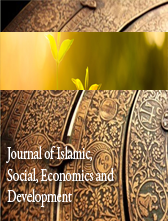LEGAL REVIEW ON HIBAH (INTER VIVOS GIFT) IN MALAYSIA: PROBLEMS AND SOLUTIONS
Abstract
Unclaimed property is an issue that still cannot be solved until today. Based on statistics in 2016, there are a total of RM60 billion worth of assets not claimed in Malaysia. Even though previous research studies already suggested the use of Hibah (inter vivos gifts) as a solution to resolve the related issues, however the number of unclaimed property is still increasing every year. Therefore, the purpose of this study is to look at the issues that arise in implementing the Hibah and propose some solutions to solve or at least reduce the number of unclaimed assets in Malaysia. This research using secondary data gathered form existing legal provisions in Malaysia. In this paper, the provisions of Islamic law and the provisions of Malaysia's Law on Hibah are discussed critically. The study identified that, the number of Muslims using Hibah as a method or instrument to distribute assets is still low in Malaysia, the study suggests that, clear legal requirements of Hibah should be improved to settle this matter. In addition, collaborative action to disseminate knowledge and create awareness, including government and private agencies, should be implemented immediately.













